On 13 December it was cold and windy on Mt. Wendelstein (1838m) in the German Alps with temperature of -17°C and huminity over 90%. The whole day ice dentrids glittered in the air ( 1 ). For 6 hours I could observe a partly bright subsun ( 2 ). Actually I’ve seen 2 subsuns in time, the “main subsun” at a lower blanket of clouds and a second displaces a bit to the right in near crystals, based on tilted ice plates (caused by the wind). It was very difficult to photograph it because of the radiant brightness of “main subsun”, but you can see the second, as the “main subsun” disappeared a short time. ( 3 – 4 – 5 )
Partly shaped imaginary arcs on this: ( 6 )
A short time before sunset in a single cirrus cloud was formed a colourful parhelia. ( 7 – 8 – 9 )
It faded a short time before sunset at 16.17 CET. ( 10 )
From 16.25 to 16.35 CET the parhelia clearly appeared again in the same Cirrus stripes. ( 11 – 12 – 13 – 14 – 15 )
I’ve not a explanation for this. I’ve observed a little displaced parhelia in far-off Cirrus (1-2deg) a couple of times, but never before such a clear sundog to this negative altitude.
Claudia Hinz

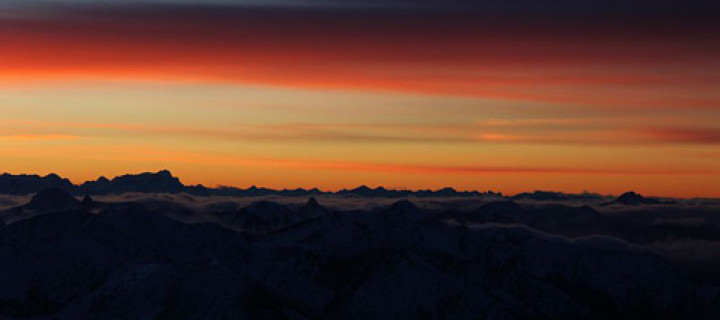
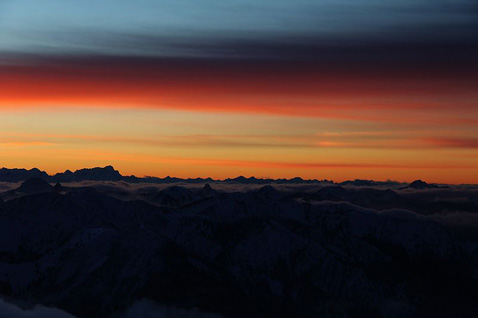
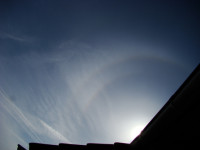
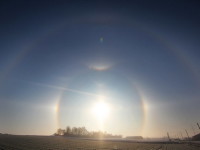
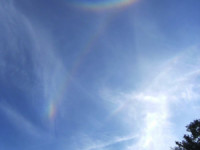
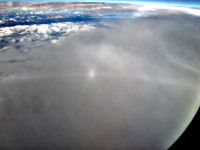
I have always wondered if you could see subhorizon halos just after sunset, because cirrus clouds are still in sunlight for a while after the sun sets. It could possibly be a subparhelion.
probably a upside-down sub-parhelia.
Thanks, those funny subsuns are great.
It is really hard to decide if this is a “superparhelia” or just a piece of 22° halo or upper parts of vertically elongated parhelia. Only if we could see clear blue or green colors on it we could say for sure that it has something to do with parhelia/superparhelia. I can not see those colors.
Claudia, you should try to measure elevation of this parhelia and check the sun elevation.
Hallo Jarmo,
the sun elevation is -1,9 to -3deg (last pic).
In the meanwhile I’m sure that’s a negative subparhelia. It should be not a problem to see this from a mountain with “negative” horizon.
Ok, there are not spectral colours but to small sun elevations it’s normal to see (in Cirrus) only reddish parhelia. I also don’t believe that’s a part of 22deg halo because in the same cirrus cloud it was to seen a parhelia before sunset. It’s unlikely that the ice crystals changed.
Best wishes
Claudia
Good observations here. A guy named K.Lenggenhager has earlier photographed these tilted subsuns in the Alps. Photos appear possibly in the paper “Zur Erklärung der schlanken lichtsäulen”
Thanks, Marko, for this tip! I’ve already searched to several observations but to little avail. I’ll try to get this article.
Hi Claudia,
You are probably right.
I made some estimations from your photos and halo seems to stay about at the same elevation all the time in that narrow cloud. That is about 2 degree above horizon. So it probably was a subparhelia above horizon (superparhelia) after all. And that was probably a reason why there was no halo during sunset.
If you get that article, send me a copy. Anyway, if it is not this article, the photo of the inclined subsun is in Lenggenhager article in any case.